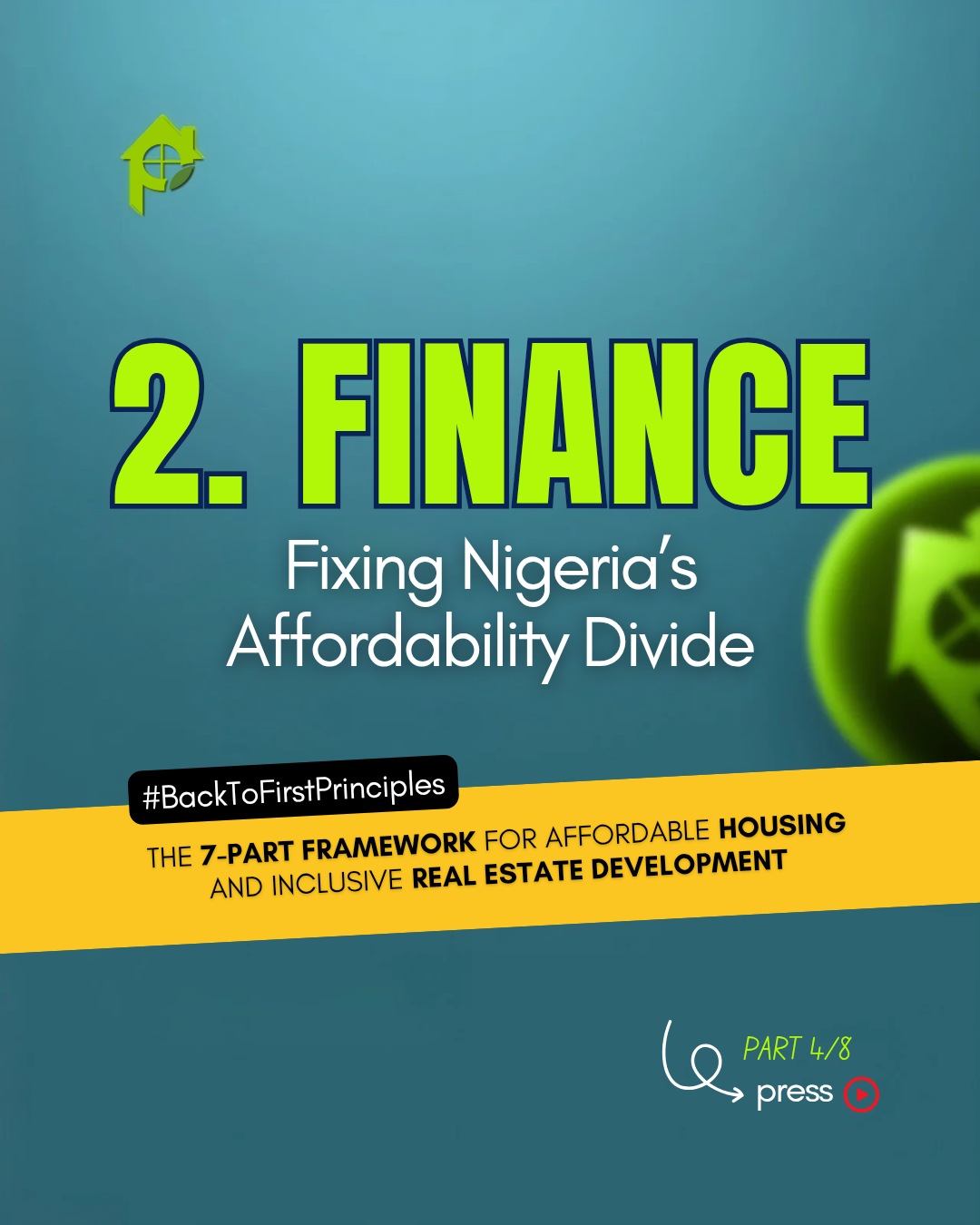
CONTACT US
Affordable Homeownership

SNEAK PEEK
In the previous episode, we established the big paradox: Household incomes are too low and unstable to qualify for housing finance, while suppliers (developers and contractors) must still make a profit to survive. It’s a tug of war between affordability and sustainability, and until now, neither side has been winning.
But what if the solution isn’t on either end? What if it’s somewhere in the middle, a place where shared innovation, community structure, and policy alignment meet?
Nigeria has one of the highest income-to-housing-cost ratios in the world. That means even with stable employment, owning a home often feels like a fantasy. And for the 80% of Nigerians in the informal sector, the system was never built with them in mind.
Mortgages demand payslips and collateral. Land sellers demand lump-sum payments. Developers can’t reduce prices without losing margins. It’s not that people don’t want to buy; it’s that the system doesn’t fit how most people live and earn.
To make housing truly affordable, we must stop copying global models that ignore our context and start building frameworks around how Nigerians actually live and earn. That means pursuing three parallel goals:
Affordability starts with earning power. Policies that grow small businesses, stabilize inflation, and increase disposable income will naturally expand access to housing finance.
Our housing policy must explicitly include informal sector earners, from traders and artisans to transport operators, who make up the majority of the workforce. Formal employment can’t be the only gateway to owning a home.
Subsidies aren’t charity; they’re levers of balance. They allow the government to support:
This is where community-led housing enters the conversation: cooperatives, age groups, fractional ownership, and shared development models. These frameworks already exist in Nigerian culture. From cooperative thrift societies to rotating savings clubs, we have long practiced collective ownership, just not on such a scale that redefines the housing sector (yet).
Imagine this: Instead of one person struggling to buy a ₦20 million plot, four or five people pool resources to buy and develop together, each owning a verifiable fraction of the land.
The benefits are clear:
It’s not theory; it’s a reawakening of how our communities have always survived economic constraints: through cooperation.
To make all this work, the housing value chain must also evolve. We can’t rely solely on traditional suppliers or profit-heavy intermediaries. Digitization, prefab construction, and direct-to-owner frameworks (like LandPool by PetitHaus) reduce overhead and pass savings directly to buyers.
The equation shifts from “Who can afford?” to “How can we make it affordable together?”
Solving Nigeria’s housing finance challenge isn’t about quick fixes or policy statements. The future of Nigerian housing won’t be built by government alone or developers alone. It will be built by people who choose collaboration over isolation, those who see ownership as a shared journey rather than a solo race.
Incomes will rise. Policies will mature. Finance will innovate. When citizens can afford it, developers can profit, and communities can organize, affordability becomes not just a dream, but a system. And the foundation, as always, will be people working together.
Next we explore land and how it upholds housing, finance, and dignity.
01.

02.
Category
Discover insights into creating affordable homeownership with PetitHaus.
